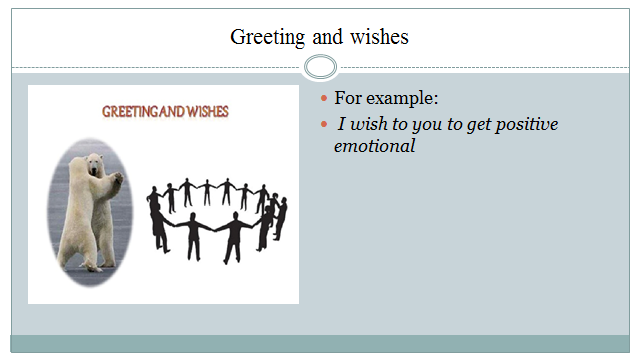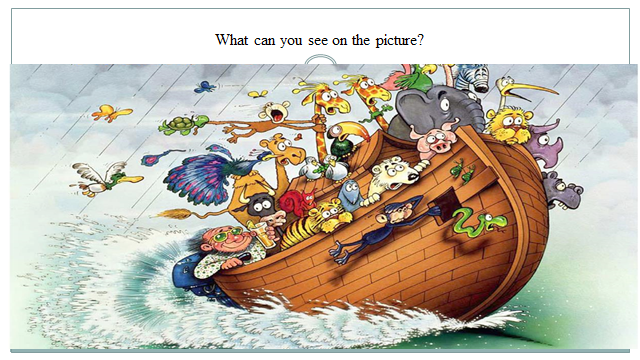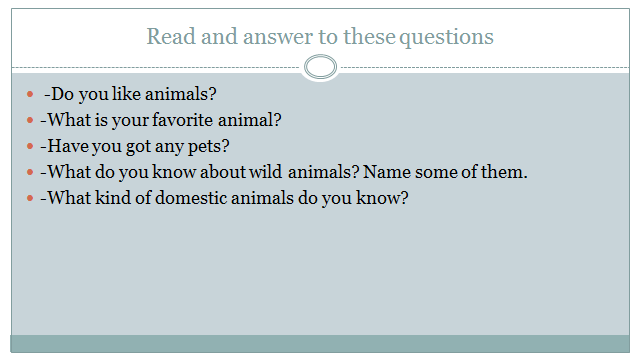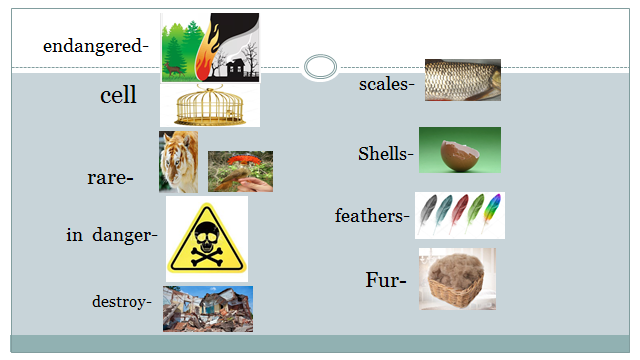| Unit 2: Living things | School: |
| Date: | Teacher name: Antropova A |
| CLASS: 5th | Number present: | absent: |
| Lesson title | Animals |
| Learning objectives(s) that this lesson is contributing to (link to the Subject programme) | 5 R4 read with some support a limited range of short fiction and non-fiction texts 5 W7 use with some support appropriate layout at text level for a limited range of written genres on familiar general topics and some curricular topics |
| Lesson objectives | All learners will be able to: name the animals they know read and understand the main facts on the topic choose the necessary information in the text Most learners will be able to: make up sentences according to the topic answer the questions in written form express their opinion with support in written form (cinquain) Some learners will be able to: make the questions according to the topic in written form make up own sentences according to the topic express their opinion without support in written form (cinquain)
|
| Assessment criteria | Name the animals; Read and understand the text; Answer the questions in written form; Make the questions in written form; Make up Cinquain; Write correctly; Find the necessary information in the text
|
| Language objective | New vocabulary
|
| Values links | Communicative abilities; friendship, care for animals |
| Cross-curricular links | Biology |
| Previous learning | Plants |
| Plan |
| Planned timings | Planned activities (replace the notes below with your planned activities) | Resources |
| Start 3min
|

Teacher asks learners: What can you see on the picture? (slide 2) (Snake, monkey, elephant, giraffe, tiger, lion, rhino, duck, turtle butterfly, cow, camel, pig, bear, penguin, squirrel) - What is the theme of our lesson? (Animals) - What do you know about animals? T: One learner should read 1 question and other learner should answer.(in chain) -Do you like animals? -What is your favorite animal? -Have you got any pets? -What do you know about wild animals? Name some of them. -What kind of domestic animals do you know? |
PP Presentation (slide 1)
Slide 2
Slide 3 |
| Middle 3 min
4 min | Pre-reading (New words) Drilling: Learners should repeat after the teacher chorus, individually, from end to start. fur – 

feathers-
shells 
scales
cell 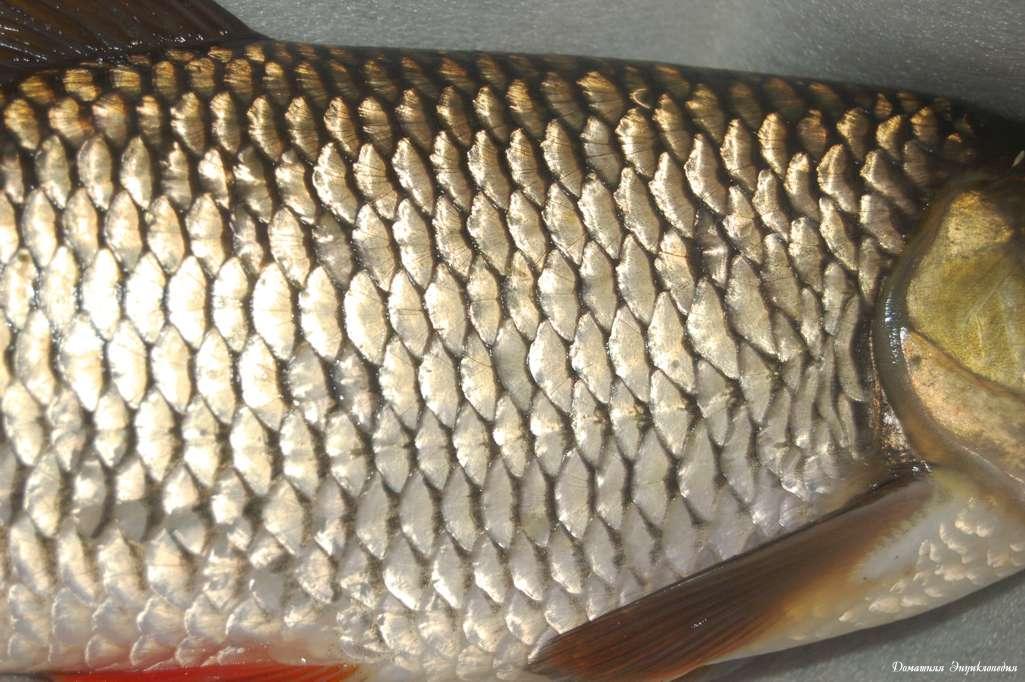 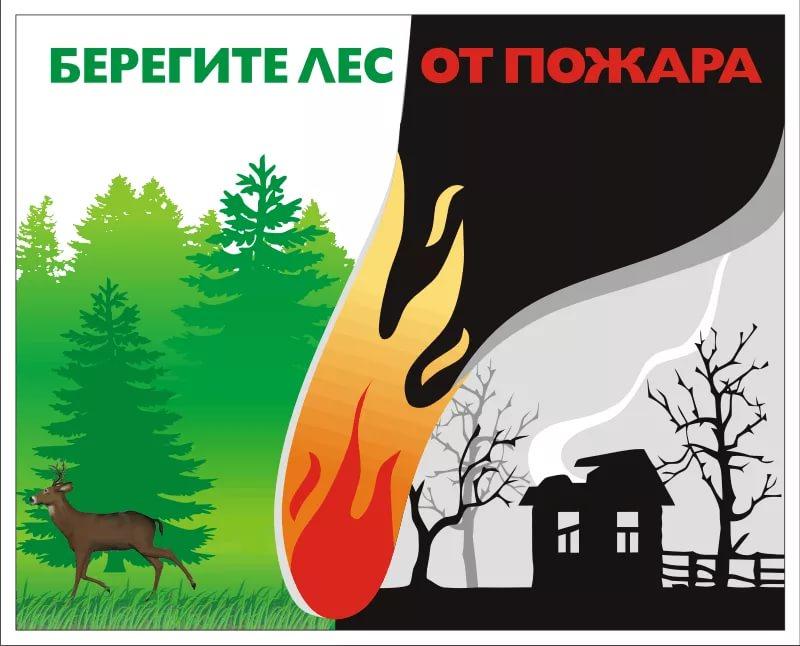
endangered-    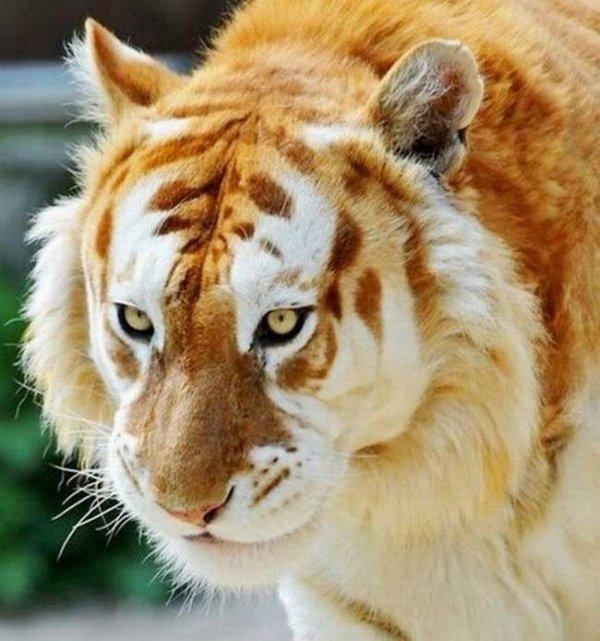
rare-
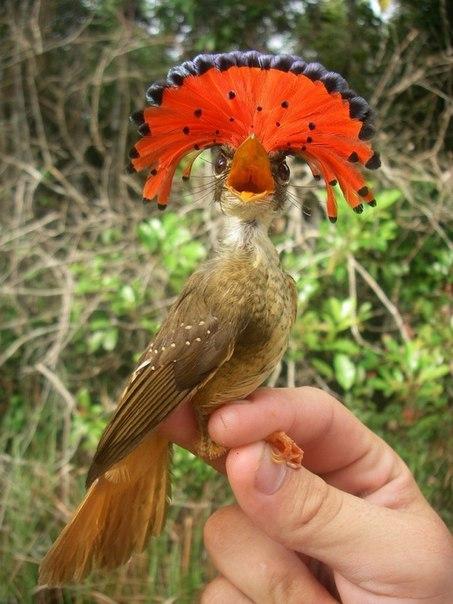
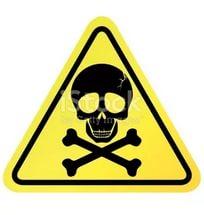
in danger-

destroy-
Task #1 Pre-learning vocabulary (P) Learners should list the animals belonging to each category | Feathers | scales | fur | shells | Endangered/ in danger | rare |
FA: | «1point» -6-8 words | «2points»- 9-11 words | «3points»- 12-15 words | | Descriptors: A learner | Writes correctly | Chooses right |
Peer ass-nt: Each learner completes the checklist( by passing and checking in chain) | Slide 4
Handout #1
|
| 10 min | While reading Read the text and do the task. (I) About Animals.
Our planet is home to a vast collection of animals. They live everywhere. Animals are all around us, so it is easy to think that we know exactly what animals are.
But some animals have fur or feathers, others have shells or scales, while many have no hard body parts at all. Animals often have eyes, ears and legs.
Firstly, animals’ bodies are made of lots of cells. These cells work together, like a team. Secondly, unlike plants, animals need to eat.
Such animals as a tiger, black rhino and giant panda, are now so rare that they are endangered.
Animals are in danger for many reasons, and most of these are to do with humans. People collect animals as pet, and hunt them for food and for ‘fun’. They destroy their habitats. We must look after food the animals we have left, before it is too late. Task #2 (differentiated task) Level A: Write out the names of the animals and parts of the body | Descriptors: A learner | Reads and understands the text Writes out 3 names of animals and 3 parts of the body. |
Ass-nt criteria: | «1point » - less 4 words | «2points »- 4-5 words | «3points» 6 words |
Level B: Answer the questions in written form: 1.Where do animals live? 2.What are they made of? 3.What do they need to live? 4.What must we do for animals?
| Descriptors: A learner | Reads and understands the text Writes full answers |
Ass-nt criteria: | «1point» - 1 full answer | «2points»- 2-3 full answers | «3points» - 4 full answer |
Level C: Write your questions to the topic? | Descriptors: A learner | Reads and understands the text Writes 5-6 questions | Ass-nt criteria: | «1points» - less 4 questions | «2points»- 4-5 questions | «3points» - 6 questions |
Peer ass-nt: Each learner complete the checklist ( by passing and checking in chain) | The text from English book (the 7th form, Ayapova, ex.2,p.39)
Handout #2 |
| 3 min | Physical education | https://www.youtube.com/watch?v=W9d2ZR580JY |
| 5 -7 min | Post-reading True/ False. Correct the false statements in written form (P) Our planet is home to a vast collection of animals Animals haven’t eyes, ears and legs. Animals’ bodies are made of lots of cells. Like plants, animals need to eat. Such animals as a tiger, black rhino and giant panda, are often see everywhere. People collect animals as pet, and hunt them for food and for ‘fun’ We must look after food the animals we have left, before it is too late. KEY: 1.T; 2.F; 3.T; 4. F; 5. T; 6.T. | Descriptors: A learner | Defines correctly the statement Corrects the false one in written form | Self ass-nt. Ass-nt criteria: | «Excellent (3 point)» - 6 right answer | «Good job (2 point)»- 4-5 right answer | «Try again (1 point)» - less 4 right answer |
| Handout #3
PPP (slide 5) |
| 10 min | Make up Cinquain (I) (Level A)
Animals ________ _________ (two adjectives in the text) ________ _________ _____ (three verbs in the text) We must care for animals
(Level B) Animals _____ _____ (two adjectives in the text) ________ _________ _____ (three verbs in the text) We ______ ______ _____ animals (complete this sentence)
(Level C)
1 word | | 2. two adjectives on the topic | | 3. three verbs | | 4. one sentence |
| Descriptors: A level | Chooses the necessary words Writes correctly |
Peer ass-nt: “Traffic lights” Assessment criteria Write all right- green (3 points) Write with mistakes in word- yellow (2 points) Write unsuitable words- red (1point) | Handout # 5 |
| End 3min | Feedback: Learners complete an evaluation of what they did during the lesson complete the statements: – at today's lesson I have understood / I have learned / I have understood … – at this lesson has pleased me … – I would praise myself for … – especially it was pleasant to me … – today I managed … – I have managed … – it was interesting … – it was difficult …
Checklist
| Tasks | Point | | Task #1 Work with words |
| | Task #2 Work with text
|
| | True/ False. |
| | Cinquain |
| | Total |
|
«4-6 points»= your mark is «3» «7-9 points»= your mark is «4» «10- 12 points»= your mark is «5»
Home work: Write essay “ Animals around us” | Descriptors: A learner Uses topical vocabulary Writes correctly Expresses his opinion
| Assessment criteria «5» – 8-10 sentences «4»-6-8 sentences «3»-4-5 sentences |
|
| Additional information |
| Differentiation – how do you plan to give more support? How do you plan to challenge the more able learners? | Assessment – how are you planning to check learners’ learning? | Health and safety check
|
| I plan to differentiate the lesson objectives. Learners work in group according to their abilities during on the lesson. -Low motivated learners will be given the task with support to the text; -Middle motivated learners will do tasks where they can with support to the text and express their opinion; -High motivated learners will be given more difficult tasks where they can do themselves. I plan to give differentiated hometask
| Learners are given the descriptors of each task with criteria; I plan to check learners’ learning using formative assessment, peer assessment, self-assessment, traffic lights; Each learners should fill the checklist to get their suitable mark | All learners will do physical exercise for relax. |
3. What do they need to live?
4. What must we do for animals?













